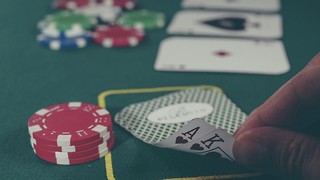It gets better: mental health and healing
Rosa Thomas opens up about her personal experiences of self-harming

‘Self harm,’ a friend once told me, ‘is just something that I can’t understand.’ I said nothing and pulled my sleeves down lower to cover up the scratches.
Already, as a reader (unless you know me in person), you have probably already formed a judgement. You think of a hunched, anonymous figure whose pallid complexion makes them look as though they’ve never seen the light of day. You think of someone whose entire existence is wrapped around their own misery; someone who likes to hurt themselves, someone who wants attention. Admittedly, you wouldn’t be completely wrong about me. I am a bit hunched. And writing this article with authorial presence does indicate that I may be self-centred and attention-seeking. I also might be wrong about you forming a judgement. But I’m writing this article because I know, as a previous non-self-harmer, that it is something that people who haven’t done it struggle to understand.
Even by using the word non-self-harmer I’m instigating a binary which isn’t necessary. I wouldn’t identify myself first and foremost as someone who self-harms and it most certainly does not control every aspect of my personality. Rather than a problem, I would characterise it as a symptom of a problem which then can become addictive. The first time I cut myself it was because I didn’t know what else to do. It was an instant release, a pain which was more welcome than the pain which I didn’t know how to control. It was like paying tribute to my emotions. Like saying, ‘yes, you feel this, and this is the external mark.’ My battle scars, so to speak. So I did it again, but only on occasion. Only when it felt like the only option. It stopped me from doing worse things to myself and, at the time, although it wasn’t the best way of coping, it was my way of coping.
Recently some of the issues I thought I’d dealt with resurfaced and I started to self-harm again, more frequently, and more compulsively. I didn’t tell my friends for a long time, fearing their reaction, but when I did tell a few of them, they weren’t melodramatic – they were supportive. When I went to my GP I was the opposite of discreet when mentioning my self-harm because I knew it would get me the support I wanted quicker. When someone hears the word ‘self-harm’, another word that springs to mind is ‘suicide’. Not everyone who self-harms is suicidal. There are times when I’ve felt at my worst when I’ve self-harmed; there are other times when I’ve felt at my worse when I haven’t self-harmed. People show their feelings, or repression of feelings, in different ways. No one way is more credible than another.
“I’m a million miles away from where I was the first time I picked up the scissors.”
I would never tell someone to just ‘stop self-harming’; eradicating a symptom doesn’t heal the cause. Telling someone to ‘stop’ something implies that they are doing something wrong. They are not. They are simply doing exactly what you would do if you had had the same psychological and environmental history as them. Telling someone to ‘stop’ offers nothing in exchange. I was only able to stop harming regularly when I started tackling my anxiety and depression, partly through CBT and also through getting to know myself: writing down my thoughts, talking to other people, and accepting that it was understandable that I felt the way I did and that it is always possible to change patterns of behaviour with the right support and motivation.
There are immediate ways of dealing with self-harm, taken alone, as a symptom. There are things you can do instead like holding onto ice, or drawing with red marker pen on yourself. I’ve never tried these things and perhaps will if I feel the urge to hurt myself again. Creative writing has proven useful to me; I started to write this article because I felt like hurting myself and now I feel much calmer.
Taking the time to access support within and outside of Cambridge has been on the whole productive. Getting different perspectives has enriched my understanding of what I need to work on, and having professional advice and doing research has given me an awareness of my options for how to go about working on these things. Some of these things I have started to do and they’re helping – other things haven’t worked, and some things I don’t know yet if they’ve worked or not. It’s a process of trial and error.
The scars on my arms have faded to white. I’m a million miles away from where I was the first time I picked up the scissors. Now I know why I self-harmed. I’ve identified the cause and started to address it. If I self-harm again, it doesn’t mean I’ve taken a permanent backwards step. Nor does it mean that I’m crazy. Bear with me, be supportive, and I’ll continue to heal
 News / Trinity exam burglar jailed for 11 months18 July 2025
News / Trinity exam burglar jailed for 11 months18 July 2025 News / Chancellorship candidates express concern about conduct of election 19 July 2025
News / Chancellorship candidates express concern about conduct of election 19 July 2025 News / Write for Varsity this Michaelmas13 July 2025
News / Write for Varsity this Michaelmas13 July 2025 Music / Inheriting a ghost 19 July 2025
Music / Inheriting a ghost 19 July 2025 Comment / The next Chancellor has their work cut out for them19 July 2025
Comment / The next Chancellor has their work cut out for them19 July 2025









